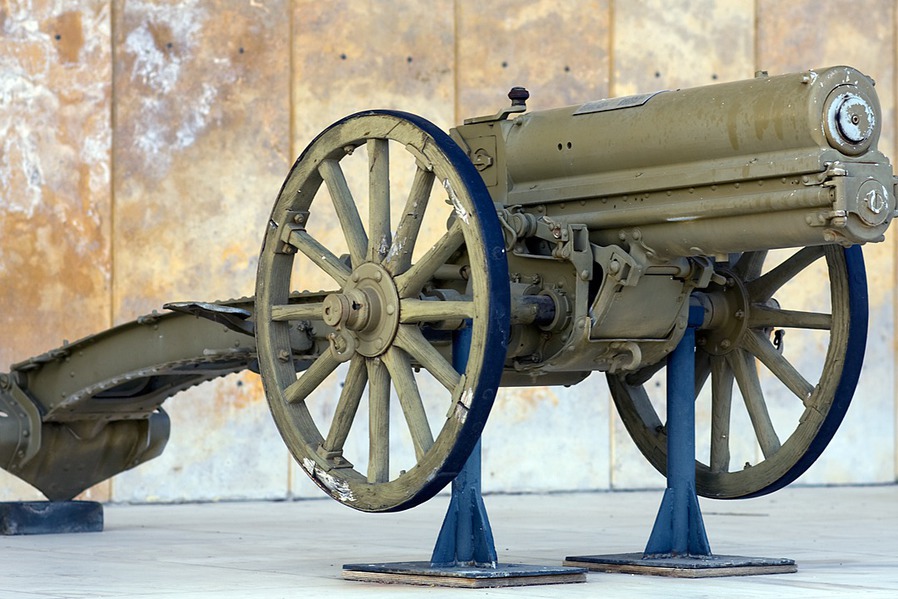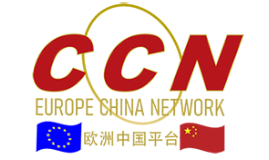Achillion
Gastouri
The stunning appearance of this stately palace takes the visitor back in history to when the palace was inhabited by two great figures from European history whose only common bond was their adoration for Corfu, Greece and its culture, Empress Elisabeth of Austria (known as ‘Sissi’) and Kaiser William II of Germany.
Empress Elisabeth built the palace to escape the tragedies of her life, and William II purchased it after her untimely death. William II, however, never had a chance to enjoy the palace’s beauty because of a war that broke out, from his own doing.
During the First and Second World War the palace was abandoned and inevitably pillaged by the enemy. After years of rebuilding and restoration, the palace was finally restored to its former beauty.
Working hours
Monday-Friday: 08.00-19.00, Saturday-Sunday: 08.00-14.30

Acropolis Museum
15, Dionysiou Areopagitou Street, Athens
At the New Acropolis Museum, you will discover the treasures that were found in the archeological site but you will also admire an impressive building of modern design. The most modern museum in Europe opened its gates to the public in June 2009, 9 years after the invitation to an international contest, the winner of which was the French-Swiss architect Bernard Tschumi with Mizali Fotiadis. The main entrance is at the pedestrian area of Dionysiou Areopagitou, however the tourists get off the tourist buses at Chatzichristou Street and they enter from Mitseon Street. The Acropolis Museum hosts findings from the sacred area of the Acropolis as well as items that were returned. In fact, during the opening, the -at that time- Minister of Culture Antonis Samaras, in a symbolic gesture of the Greek request for the reunion of the Acropolis marbles, placed a piece of marble that was returned from the Museum of the Vatican, into the metope of Parthenon. As you enter the museum, the glass floor brings you into contact with the archeological site that was discovered during the excavation. The New Acropolis Museum covers a total of 25,000 sq.m. and features exhibitions of 14,000 sq.m., ten times bigger than the old one. The permanent exhibitions occupy 3 floors and are divided into 4 levels, whereas on the 5th there are additional areas such as a cafe, restaurants and gift shops. On the first level you will admire exhibits and findings from the slopes of the Acropolis. At the west and north side of the 1st floor, you can view from up close the panels of the roof and part of the Ionic columns of Propylaia. the sculptures of the frieze and the slab of the Temple of Athena Nike, the sculptures of the frieze of Erechtheion and of course the impressive Karyatides of the temple itself. Be aware that Propylaia, the Temple of Athena Nike and Erechtheion are the most important monuments of the building scheme of Classic Acropolis.
Working hours
1 November – 31 March: Tuesday to Thursday: 9:00 a.m. – 5:00 p.m. (Last admission: 4:30 p.m.) Friday: 9:00 a.m. – 10:00 p.m. (Last admission: 9:30 p.m.) Saturday and Sunday: 9:00 a.m. – 8:00 p.m. (Last admission: 7:30 p.m.) 1 April – 31 October: Monday: 8.00 a.m.- 4.00 p.m. (Last admission: 3.30 p.m.), Tuesday to Sunday: 8:00 a.m. – 8:00 p.m. (Last admission: 7:30 p.m.) Friday: 8:00 a.m. – 10:00 p.m. (Last admission: 9:30 p.m.) Closed: Every Monday and 1 January, Easter Sunday, 1 May, 25 and 26 December

Aegean Maritime Museum
Chora, Mykonos
Located in Chora, next to Lena’s house, it covers the naval history of the island. Here you will find copies of pre-Minoan era ships, important shipping documents, historic maps, equipment and documents, and rare coins.
Working hours
Daily: 10:30-13.00 & 18.30-21.00

Archaeological Museum
Ippoton Street, Medieval Town
The Archaeological Museum of Rhodes is housed in a former Hospital of the Knights of St. John in the Medieval Town. The construction of the building began in 1440 and was completed under the Grand Master d’ Aubusson between 1476 and 1503. This impressive Medieval Gothic building with Renaissance elements houses archaeological findings from various areas on Rhodes, as well as other nearby islands, which are exhibited in the 6 rooms on the first floor of the Archaeological Museum. Among them you will notice small objects from the funerary of ancient Ialisos and ancient Kameirou from the geometric and classical periods, a collection of classical Hellenistic and Roman sculptures, floor mosaics from the Hellenistic era from Rhodes and the early Christian period from Karpathos, as well as tombstones from the period of the Knights with relief representations. Among the most important exhibits in the museum are the colossal head of Helios, the statue of Aphrodite bathing, as well as the headstone of Kritous and Timaristas from the 5th century BC from Kameiro and the column of Kalliarista from Rhodes from the 4th century BC.
Working hours
Monday: 09.00-16.00, Tuesday-Friday: 08.00-20.00, Saturday-Sunday: 08.00-15.00

Archaeological Museum of Thera
Fira, Santorini
It was built in 1960 by the Ministry of Public Works in order to replace the old museum (built in 1902), which had collapsed during the earthquakes of 1956.
The Museum contains the following collections:
Sculpture, ranging from the Archaic to the Roman period.
Inscriptions, ranging from the Archaic to the Roman period.
Vases and clay figurines, dating from the Geometric to the Hellenistic periods
Working hours
Tuesday-Sunday: 09.00-16.00

Archaeological Museum of Thessaloniki
6, Manoli Andronikou Street
Within about 10 minutes’ walk from Aristotelous square, the Thessaloniki Archaeological Museum is a must see, if you want to get a complete picture of the city’s rich history. The building which houses the museum, designed by the architect Patroklos Karantinos, was inaugurated in 1962 and is one of the foremost examples of modern Greek architectural trends. During your visit you will see findings from the wider area of Thessaloniki and surrounding areas, through which the civilization of Macedonia is presented from the beginning of prehistoric times up to late antiquity. After its renovation, the museum today hosts five thematic exhibitions which “narrate” the history of ancient Macedonia and its culture. The new permanent exhibition of the museum, found outdoors, opened its doors on 12 September 2014, and it is called “Memory and… Stones”. It is an exhibition with antiquities made of stone that have been found in excavations in Thessaloniki as well as in other areas around it, most of them dating back to the imperial years (1st-3rd century A.D). A specially designed space has also been created where you can attend educational courses featuring simulation of excavations and stone sculpting workshops.
Working hours
Monday: 13.00-20.00, Tuesday-Sunday: 08.00-20.00


Bee Museum
5th km Tsairi- Airport, Pastida
Visit the one and only Bee Museum in Greece, located in Pastida, to see up close the fascinating world of bees in transparent observation hives and experience the tradition and history of beekeeping in Rhodes. The idea for the foundation of the Museum belongs to the beekeeper Nikos Melissourgos, offspring of the historic family of beekeepers from Naxos and president of the Beekeeping Association of Rhodes for the last 15 years, who was driven by his passion, love and admiration for bees and his fellow men. The Museum was constructed in 2004, was recently renovated and is maintained by the Beekeeping Company of the Dodecanese, the largest company of production and standardisation of bee products in the Dodecanese. A visit here will give you the opportunity to know everything regarding bees and their valuable products (honey, pollen, beeswax, propolis and royal jelly), interact with digital exhibits and educational games, take a walk in a bees’ garden and learn about the herbs and flowers of Rhodes, which bees visit.
Working hours
Monday-Saturday: 08.30-17.00, Sunday: 09.00-13.00


Benaki Museum
1, Koumbari Street & Vas. Sofias Avenue, Athens
The centrepiece of the Benaki Museum, it aims to present the historical and cultural development of Hellenism within its geographical and evolutionary context, from prehistory to the present. The priceless collections housed in this building depict masterpieces from the Neolithic Age, the Antiquity and the Roman Era to the Byzantine Age, and from the fall of Constantinople, the period of Frankish rule and the Ottoman Occupation, to the outbreak of the Greek War of Independence in 1821. The collections also include works of art from the time of the formation of the Modern Greek State until the Asia Minor Catastrophe in 1922. The breadth and variety of such collections defines the Benaki Museum and sets it apart, not as another historical museum, an art museum or a museum of decorative arts, but as the museum of Greek civilization, in all its manifestations.
Working hours
Wednesday, Friday: 09.00- 17.00, Thursday, Saturday: 09.00-24.00, Sunday: 09.00-15.00, Monday, Tuesday closed Byzantine and Christian Museum
Byzantine and Christian Museum
22 Vasilissis Sofias Avenue, Athens
Located in the center of Athens, at a short distance from the metro station ‘Evangelismos’, you will find the Byzantine and Christian Museum, one of the most significant museums that possesses artifacts of the art and civilization of the byzantine and post-byzantine periods. The museum has over 25,000 artifacts comprising of sculptures, wall paintings, icons, ceramics, textiles, paintings, mosaics, manuscripts, minor arts, etc that are dated between the 3rd and 20th century AD and come from the Greek, Asia Minor and Balkan regions. The exhibits are divided into the following themes: “From the ancient world to Byzantium”, “The Byzantine World”, “Intellectual and artistic activity in the 15th century”, “From Byzantium to Modern Era”, “Byzantium and modern art”. The museum has been organizing and conducting exhibitions and educational programs since 1989 to enhance its educational role.
Working hours
Monday-Sunday: 08.00-20.00

Chania Archaeological Museum
28, Halidon Street, Old Port
You will come across the Chania Archaeological Museum on the busy Halidon Street in the Old Town, opposite the Cathedral. Housed in a catholic church in the Agios Frangiskos Venetian monastery, it has a collection of exhibits which introduce you to the cultural history of the prefecture from neolithic times to the Roman period. The museum exhibits are divided into two sections. The findings from the late neolithic era and the Minoan era are located in the east wing, while those from the Iron Age are displayed in the west wing. They are presented in excavation and themed sets. The Minoan findings from Chania town and other regions in the prefecture stand out as well as offerings from the graves from the geometric period, coins, jewellery, sculptures, columns and inscriptions. Since 2000, the three small museum rooms have housed the Konstantine, Marika and Kyriakos Mitsotakis collection which were donated by the Mitsotakis family. You can admire objects of Minoan ceramics, pottery, stone carvings etc in the collection. The museum also has maintenance workshops and an exhibition shop next to the main entrance.
Working hours
Tuesday-Sunday: 08.30-15.00

Epigraphical Museum
1 Tositsa Street, Athens
The Epigraphical Museum, which was founded in 1885 and is located in the center of Athens is unique in Greece and throughout the world as it is the largest museum of its kind to safeguard ancient Greek inscriptions written on stone from the Attica region as well as other areas of the ancient Greek world. A total of 14,000 inscriptions are kept by the museum, whose purpose is to safeguard, protect, conserve, display and promote its epigraphical collections. The museum also has photographic material, a specialized epigraphy library and scientific files related to the inscriptions. In their majority the inscriptions are written on stone, mainly marble, while others have been found on clay. Most inscriptions are in ancient, Greek, however, there are some inscriptions in Latin, Jewish, a few in Ottoman and other languages on display. All the inscriptions date back to the 8th century B.C. until the 5-6th century A.D. although there are few from the byzantine and post-byzantine period. The majority of the inscriptions originate from the Attica region, while some are from the south of Greece and its islands and a few from Asia Minor.
Working hours
Tuesday-Sunday: 08.00- 15.00
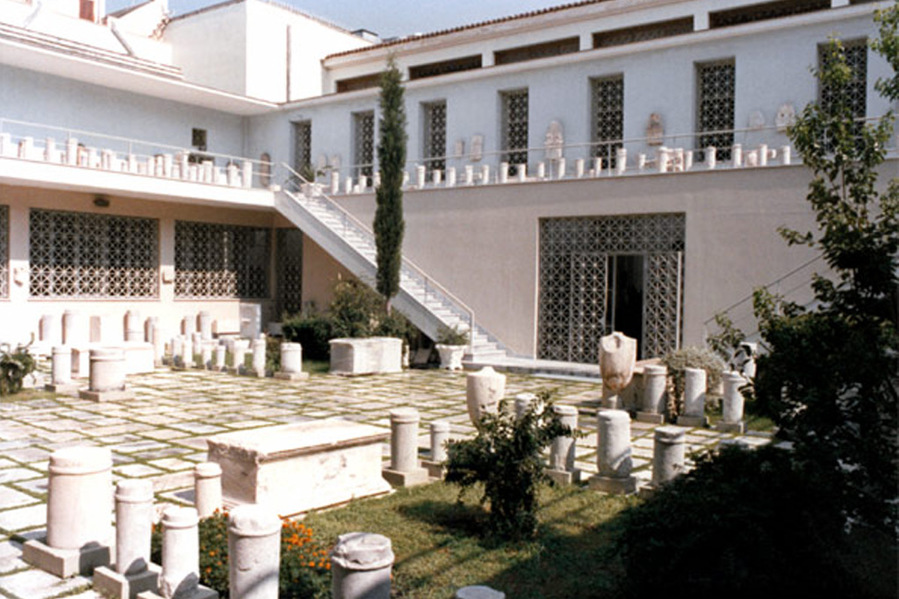
Goulandris Natural History Museum-Gaia Centre
13, Levidou Street, Kifissia
Goulandris Natural History Museum was founded in 1965 by Angelos and Niki Goulandris in order to promote interest in Natural Sciences and is housed in an elegant building in Kifisia. It is a model for the promotion of Natural Sciences and public awareness regarding the protection of endangered species. If you’re fascinated by the world of plants and animals, you should pay a visit to this museum. The rooms contain Botanology, Entomology, Marine Biology, Geology, Herpetology, Ornithology and Paleontology exhibits. It’s worth noting that the first exhibition halls of the Museum (plants biology) were designed by the British Natural History Museum. The Museum has one of the best educational departments with very interesting activities and a gorgeous garden full of trees, bushes and a huge variety of plants. You may notice the towering Lebanese cedar in the center of the garden. Here you’ll also find the Ammonites cafe and the Museum Cafe, where you can enjoy fresh beverages, coffee or cold dishes and snacks.
Working hours
Tuesday-Friday: 09.00-14.30, Saturday- Sunday: 10.00-15.00


Greek Pharmaceutical Museum
173-175, Ethnikis Antistaseos Avenue, Finikas
The unique Pharmaceutical Museum of Greece is located in the Finikas district of Thessaloniki, toward the airport. Situated approximately 10 minutes by car from the center of the city, the museum offers the opportunity to learn all about the history of pharmaceutical science in Greece. Up until 2007 when it opened its doors, the lack of such a museum was a major loss for a country, which has come a long way in providing this great space. Today, however, the study and emergence in the field, is not only tangible but also enables a lot of people (who previously did not know of the existence of the museum) to be informed of it. Through the exhibits housed in its halls, it highlights the important social role of Greek pharmacists and their contribution to the development of pharmaceutical science, which in recent years has made significant steps.
Working hours
Monday-Friday: 08.00-15.00

Hellenic Motor Museum
33-35, Ioulianou Street & Patission Street, Athens
The Hellenic Motor Museum is housed in the modern and of industrial architectural design Capitol Mall in downtown Athens and welcomes young and old lovers of motorisation who want to discover its treasures. It is one of the recent museum arrivals in Athens (it opened in March 2011) and definitely impressed everyone. Based on the architectural standards of Guggenheim Museum of New York with the characteristic spiral ramp, it upgrades the whole area and is now a centre of attraction for fans of the cars and the art. The collection includes 120 cars (Theodore and Joanna Charagionis Foundation dating from 1895 until almost 1980). The audience has the opportunity to admire a big enough number of Bentley, Rolls Royce, Μaserati, Bugatti, Aston Martin, Bristol, Lamborghini, Porche, Mercedes, BMW and some four-wheeled superstars, such as the impressive pink Chrysler Imperial of Robert Plant of Led Zeppelin, the Rolls Royce of Sir Laurence Olivier, cars belonging to Formula 1 drivers and Cadillac Seville with interior specially designed by Gucci, as well as cars belonging to barons and lords. The tour begins from the 3rd floor where the booking office is. At the same floor there is a shop,a F1 simulation hall and a sophisticated amphitheatre with a capacity of 200 persons, where at nights it becomes a 3D projection cinema hall.
Working hours
Monday-Friday: 10.00-14.00, Saturday- Sunday: 11.00-18.00

Herakleidon Museum 16, Iraklidon Street, Thissio, Athens
16, Iraklidon Street, Thissio, Athens
The Herakleidon Museum was founded in July 2004 by Pavlos Firos and his wife, Anna-Belinda, for Fine Art friends and it is housed in an 1898 neoclassical building in Thissio (on the street after which the museum was named). Up to 2014 the museum focused on fine arts, organizing exhibitions of the works of important artists. Today, however, it has evolved into an interactive centre based on the philosophy “Science, Art and Mathematics”. The main building houses the permanent, interactive exhibition “I Play and Understand” with designed interactive games that invite young and old to come a step closer to science, art and mathematics.
Working hours
Sunday: 10.00-18.00, Monday- Saturday: educational programs for school groups upon request

Heraklion Archaeological Museum
2 Xanthoudidou Street
The Herakleion Archaeological Museum is one of the largest and most important museums in Greece, and among the most important museums in Europe. It houses representative artefacts from all the periods of Cretan prehistory and history, covering a chronological span of over 5,500 years from the Neolithic period to Roman times. The singularly important Minoan collection contains unique examples of Minoan art, many of them true masterpieces. The Herakleion Museum is rightly considered as the museum of Minoan culture par excellence worldwide.
Working hours
Tuesday-Saturday: 08.00-20.00, Monday & Sunday: 09.00-16.00

Heraklion Museum of Visual Arts
3 Nymfon Street
The Heraklion Museum of Visual Arts was established in order to support cultural and artistic activity of all kinds, with particular regard to the advancement and strengthening of the visual arts and the promotion of work by Cretan artists.
The museum acts as venue where artists, art lovers and their friends can meet and exchange views in a spirit of solidarity, co-operation and unity, and a place for aesthetic and intellectual cultivation, recreation and learning. To that end, the museum organizes educational seminars and lectures on matters relating to art, as well as conferences, concerts, seminars and publications. The venue is also suitable for use as exhibition space, for association meetings and for nationwide or European-level collaborative projects with other private or state-run museums.
Working hours
Monday- Saturday: 10.00- 13.00

Historical Museum of Crete
27 Sofokli Venizelou Street & Lysimachou Kalokairinou street
The Historical Museum of Crete was founded by the Society of Cretan Historical Studies in 1953, following the issue of a Ministry of Culture permit to establish a museum collection. The Museum was initially housed in the Andreas and Maria Kalokerinos House (1903), a listed neoclassical building granted by the A. & M. Kalokerinos Foundation in accordance with the donor’s wishes.
The Museum was founded and is run by the Society of Cretan Historical Studies, with the aim of preserving and showcasing the cultural heritage of Crete from early Byzantine times to the modern era. This aim has been achieved gradually, by the collection, purchase and donation of artefacts, together with artefacts on long term loan from the Ministry of Culture.
From its beginnings, the Historical Museum of Crete has been animated by a pioneering spirit. Successive extensions to the museum and recent re-displays, using contemporary perceptions in museology and new media applications, have contributed to creating a lively, up-to-date, visitor-friendly museum. The HMC now offers a composite view of Cretan history and art from the early Christian centuries to the 20th century.
Working hours
Winter Schedule (November-March): Monday-Saturday: 09.00-15.30, Summer Schedule (April-October): Monday-Saturday: 09.00-17.00

Hydrobiological Station of Rhodes-Aquarium
Kos Str
A stroll along the seaside pedestrian walk, in the city of Rhodes, leads to the northernmost edge of the island. This is where the Hydrobiological Station of Rhodes-Aquarium is located. Housed in a building of unique architectural style, the Aquarium is the ideal place for those wishing to get acquainted with the marine wealth of the Aegean and the Eastern Mediterranean sea
The Aquarium has been fashioned in the form of an underwater sea cave. Sinuous corridors, artfully decorated with natural sea-shells create a true underwater ambience.
Working hours
Opening Times
April 1st – October 31st : 09.00 – 20.30
November 1st -March 31st : 09.00-16.30

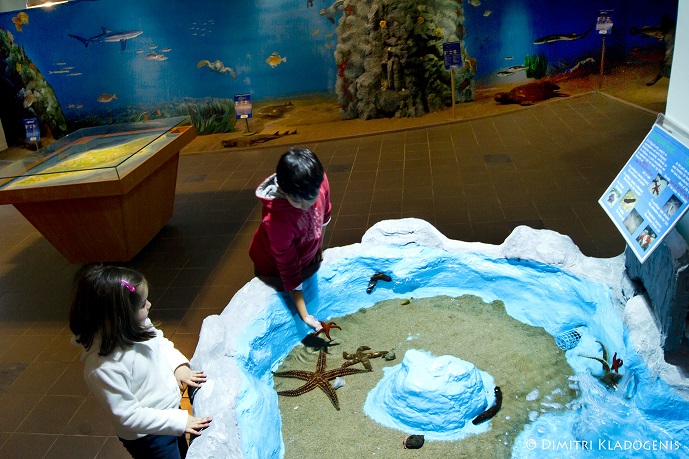
Jewish Museum of Thessaloniki
13, Agiou Mina Street
The Jewish Museum of Thessaloniki is housed in one of the few buildings which survived the devastating fire of 1917 in the area where the Jewish community once prospered, reaching its peak during the 16th century. Its creation is an initiative of the Jewish Community of Thessaloniki, with the aid of the Cultural Capital of Europe Organization “Thessaloniki 1997”, which restored the building. Here you can learn everything there is to know about the history of the Jewish community in the Maiden of the Thermaikos from the 3rd century AD until World War II through the exhibits in the permanent collections, photographs and Simon Marks’ photographic exhibition, “Thessaloniki, Sephardic Metropolis”. On the museum’s ground floor there are monumental stones and inscriptions found in the Jewish necropolis as well as a series of photographs, while in the center of the first floor there is a display of the Jewish community history, surrounded by halls which visually detail the religious and everyday life of the Jews in Thessaloniki.
Working hours
Tuesday, Friday, Sunday: 11.00-14.00, Wednesday, Thursday: 11.00-14.00 & 17.00-20.00


Kazantzakis Museum, Myrtia
The Kazantzakis Museum pays tribute to the important intellectual, author, thinker, philosopher, politician and traveler Nikos Kazantzakis.
The Museum is made up of a cluster of buildings in the central square of the historical village of Varvari, now known as Myrtia. The Museum Exhibition is housed on a site formerly occupied by the home of the Anemoyannis family, which was related to Nikos Kazantzakis’ father, Kapetan Michalis.
The Museum was founded in 1983 by set and costume designer Yiorgos Anemoyannis, a pioneering figure in Greek theatre. His fundamental aim was to preserve the author’s memory and promote his work and thought. Significant assistance was offered by Eleni Kazantzaki, the author’s second wife.The museum opening ceremony was held on 27th June 1983.
Working hours
Wednesday- Sunday: 09.00- 17.00 (March- October), Sunday: 10.00-15.00 (November- February)

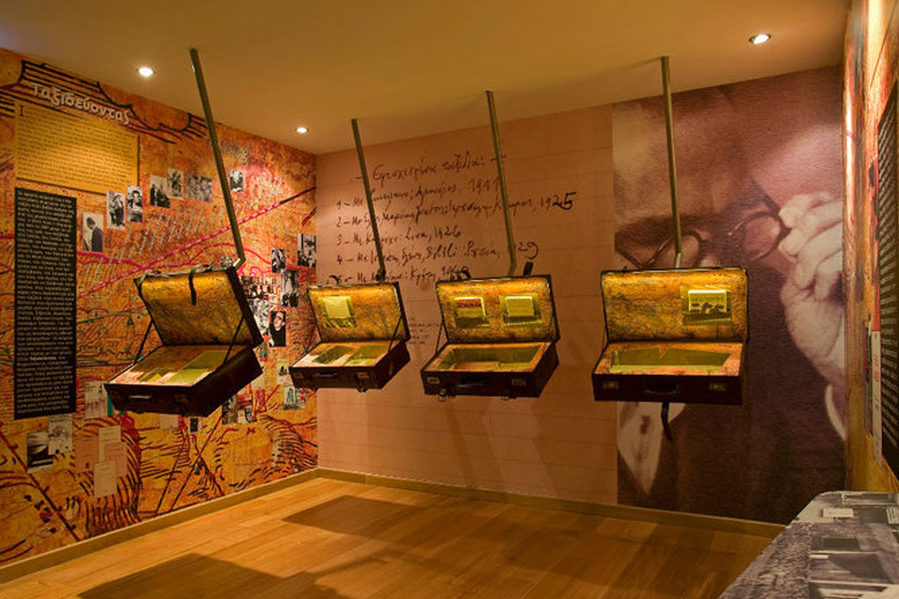
Kerameikos Archaeological Museum
148, Ermou Street
The Kerameikos Archaeological Museum is within Kerameikos archaeological site (near Monastiraki metro station and Thissio train station). It is considered to be the most significant in Greece with respect to burial artifacts as most of the exhibits relate to these specific objects. The ground floor of the museum building was founded in 1936 and designed by the architect H. Johannes. It consists of 3 rooms and a patio which was opened in October 1938. The first room and the patio house sculptures from all periods of antiquity, while the other rooms have displays of finds from excavations of the German Archaeological Institute in the 38.500 sq.m. Kerameikos necropolis. Note that the Kerameikos archaeological site was the necropolis of Athens for 15 consecutive centuries. It can be reached via Ermou pedestrian Street near Pireos Street.
Working hours
Tuesday-Sunday: 08.00-15.00 (winter), Daily: 08.00-20.00 (summer)


Koutsoyannopoulos Wine Museum
Vothonas, Santorini
Located on beautiful Santorini, the Koutsoyannopoulos Wine Museum has everything a visitor would want to know about winemaking in one of the most unique places on earth. With the Koutsoyannopoulos family knowledge and historical exhibits, guests will get a glimpse of what life was like as a winemaker here.This one of a kind museum happens to be nestled in a cave and because of its unique position this natural labyrinth is eight meters below ground and 300 meters long. It took our family twenty one years of hard work, patience, and perseverance to complete the wine museum in this remarkable location, but it was all worth it.
Working hours
Daily: 09.00-19.00 (April-October), daily: 09.00-16.30 (November-March)


Macedonian Museum of Contemporary Art
154, Egnatia Street
The Macedonian Museum of Contemporary Art is a vivid example of Thessaloniki’s close relationship with art and culture. This museum is special because it represents a citizen initiative, the members of which decided to create a contemporary art center. The museum’s permanent collection includes more than 1,800 works by Greek and foreign artists. Donations made by collectors, artists, gallery owners and individuals continue to enrich the collection. Following the footsteps of Alexandros Iolas, Franz Geierhaas, Magda Kotzia, A. and D. Ksidi, G. Apergis, N., A. and X. Sahinis are also great benefactors of the MMCA.
Working hours
Wednesday: 10.00-22.00, Thursday-Saturday: 10.00-18.00, Sunday: 11.00-15.00

Maritime Museum of Crete
Akti Kountourioti, Old Port
The Maritime Museum of Crete is located at the entrance to the Firka Fortress in the west part of the Old Port. The characteristic red building, with its big anchor in the outer courtyard has housed the exhibits since 1973. It was established to safeguard the maritime traditions of Crete. The exhibits are divided into specific sections -reception and symbols, Venetian, Balkan Wars, Independence Struggle, Byzantine period, Bronze Age, Altar of the Fatherland, World War II, Postwar Period, Bridge Destroyer and the Merchant Navy. The permanent exhibition comprises of 2,500 objects, including paintings, maps, nautical instruments, photographs, heirlooms etc, covering the period from the Bronze Age to the present. In addition, you will have the opportunity to admire a rich collection of shells from around the world in the museum.
Working hours
Daily: 09.00-14.00 (01/11-31/04), Monday-Saturday: 09.00-17.00, Sunday: 10.00-18.00 (01/05-31/10)

Municipal Art Gallery
98, Halidon Street, Old Town
The Municipal Art Gallery of Chania is housed in a 1910 three storey building on the main Halidon Street. The building is a characteristic example of 19th and 20th century neoclassical commercial and industrial Greek architecture. Since 2003, its aim has been to actively contribute to the cultural vision of the municipality and develop as a museum and a place for the protection and recovery of civilization. It has hosted exhibitions with works by famous artists with parallel exhibitions and educational programs for all ages.
Working hours
Monday-Friday: 10.00-14.00 & 18.00-21.00, Saturday: 10.00-14.00


Municipal Art Gallery
Palaia Anaktora

The Corfu Municipal Art Gallery was founded in 1991 under the mayor Ioannis Kourkoulos. It was originally the Dalietos residence, but from 1995 onward they occupied the east wing of the Palace of Archangel Michael and Saint George in the historic center of Corfu town. One part of the collection has been on display in the historic building of the Ionian State since November 2008. In the splendid gallery space you will have the opportunity to admire two major exhibitions which take you back to the development painting and printmaking on Corfu from the 16th to the 20th century. The Gallery collections include sculpture and fine art photography as well as assemblages by modern artists, which are exhibited at temporary exhibitions as they are no longer in the permanent exhibition.
Working hours
Tuesday-Sunday: 09.30-15.00 (permanent exhibitions), 10.00-15.00 (temporary exhibitions)

Museum of Asian Art
Old Palace
Today, the Palace of Saint Michael and Saint George houses the Corfu Museum of Asian Art, the only one of its kind in Greece, solely dedicated to the art and antiquities of the Far East and India.
It was founded in 1928 as the Museum of Sino-Japanese Art, following the donation of Gregorios Manos’ Sino-Japanese collection to the Greek state. Since that time, the Museum has been a pole of attraction for many other donations, resulting in its collection currently comprising approximately 15.000 works of Asian art form private collections and individual item donations. The 1973 Hadjivassiliou donation, in particular, with the addition of 400 works from India, Pakistan, Tibet, Siam and southeast Asia, changed the Museum’s strictly Sino-Japanese profile and led to it being renamed to the Museum of Asian Art.
Today it enjoys worldwide recognition, with rare items from its collections being presented in international exhibitions. The most recent one was held in Tokyo, at the “Tokyo Metropolitan Edo – Tokyo Museum” in the summer of 2009.
Working hours
Tuesday-Sunday: 08.30-15.30

Museum of Byzantine Culture
2, Stratou Avenue
Visit one of the most modern museums in Greece on 2, Stratou Avenue, opposite Pedion tou Areos, and get a deep insight into culture and art. Through its fascinating exhibits you will be able to get a clear picture of Byzantine culture. The museum’s collections include sculptures, mosaics, frescoes, religious icons, coins, minor arts, glassware, collectible manuscripts etc., which were brought to light mainly through excavations in many different areas of Macedonia and of course Thessaloniki. Among its exhibits are items that have been donated to the museum or purchased by the Greek state, as well as Macedonian antiquities which were returned to Greece. The museum has a total of 11 galleries.
Working hours
Monday- Sunday: 09.00- 16.00
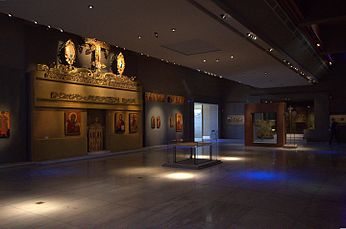
Museum of Macedonian Struggle
23, Proxenou Koromila Street
The Museum of Macedonian Struggle is located in the most central spot in Thessaloniki, next to the Grigorios Palamas cathedral on Proxenou Koromila Street. It is housed in an 1893 historic building which was constructed to the designs of the famous architect, Ernst Ziller (during Ottoman rule, this was the General Consulate in Thessaloniki). The collection is considered to be one of the richest and most up-to-date as far as mementos and documents from the period of the Macedonian Struggle are concerned. The 6 halls on the ground floor display photographic material, historical documents, maps, various weapons and uniforms as well as personal items from the period of the struggle between 1870 and 1912. In the basement there is a model display of scenes of the Struggle and in the lecture hall on the first floor you can admire A. Haitoglou’s collection of Greek army weaponry.
Working hours
Tuesday-Friday: 09.00-14.00, Saturday: 10.00-14.00



Museum of Modern Greek Art
2, Symi Square, Medieval Town
The Modern Greek Art Museum presents extensive painting and engraving collections not to mention numerous sculptures, drawings and documents of historical value. The works of engraving and painting represent efficiently the modern Greek art of the 20th century along with its most eminent artists. Some of these works of art are considered to be of great significance and they are chosen in order to narrate the history of art. The central idea of all these collections is to present the history of Greece through the eyes and the soul of Greek artists of the 20th century. The Modern Greek Art Museum reflects the particularity and simultaneously the international character of Greece.
Working hours
Tuesday-Saturday: 09.00-14.00

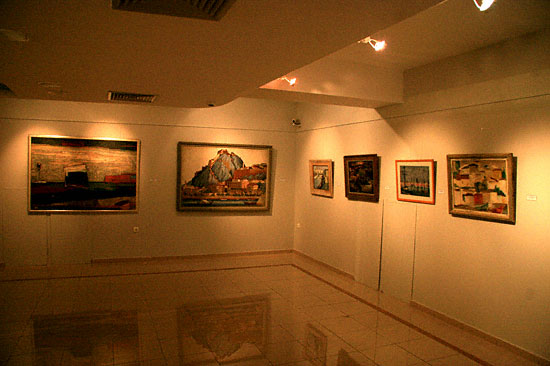
Museum of Prehistoric Thera
Fira, Santorini
The exhibition is structured in four units, referring to the history of research at Thera, the geology of Thera, the island’s history from the Late Neolithic to the Late Cycladic I periond (early 17th century B.C.) and the heyday of the city at Akrotiri (mature Late Cycladic I period, 17th century B.C.). In the last unit, in particular, various aspects are presented, such as the plan and architecture of the city and its organization as an urban centre, the emergent bureaucratic system, the development of the monumental art of wall-painting, the rich and diverse pottery repertoire, the elegant jewellery, the reciprocal influences between vase-painting and wall-painting, and the city’s and the island’s complex network of contacts with the outside word.
Working hours
Monday, Wednesday-Sunday: 09.00-16.00

Museum of Typography
Chania Park of Local Industies Building 13-03
Unique in Greece, the Museum of Typography is dedicated to the art that changed the course of history. The Greek word “τυπογραφία” means both typography and printing and the museum itself involves both arts. It is located near Chania, at the the Industrial Park of Souda and consists of two large wings and three individual halls covering an area of approximately 1,200 s.m.Founders of the museum are Yannis and Eleni Garedakis, owners and founders of the local newspaper “Haniotika Nea”. The museum started as a small private collection, next to the newspaper’s printing facilities, and first opened its doors to the public in 2005.A few years later, in 2012 a new wing was added and in 2015 another hall was inaugurated, with rare editions (16th – 19th century) that connect the history of printing to the local history of Crete.Since 2012 Typography Museum is a member of the Association of European Printing Museums (AEPM).In 2016 the Museum of Typography had the honor to be nominated for the distinguished prize “European Museum of the Year Award 2016“, (EMYA 2016) awarded by the European museum Forum (EMF), under the auspices of the Council of Europe.The Museum of Typography is a modern and unique museum that presents to all guests the history of printing and typesetting. Through the interactive tour, guests come to understand the course of typography from middle ages up to the present days. During the tour all visitors are encouraged to print at printing presses of the 19th century.Alongside, the museum organises and hosts cultural events all year long, such as conferences, book presentations, theatrical plays, musical events, and an annual international poster contest about typography.
Working hours
Tuesday,Wednesday,Friday:12.30-15.00


National Archaeological Museum
44, Patission Street, Athens
The National Archaeological Museum, the largest museum in Greece and one of the most important worldwide, is housed in a magnificent 9,500 sq.m. building on Patission Street and hosts more than 16,000 exhibits. Discover the treasures of ancient Greek Art in this strikingly beautiful museum, which was founded at the end of the 19th century. Here you’ll admire a huge collection of great exhibits representing all the civilisations that flourished in Greece from Prehistory until the fall of the Roman Empire. Be sure to plan enough time in advance to enjoy the museum that hosts 5 permanent collections: the Prehistoric Antiquities collection, the Sculptures collection, the Vase and Minor Objects collection, the Bronze collection and the Egyptian and Near Eastern Antiquities collection. You should also visit the library which houses rare editions and rich photographic archives. Among the most famous exhibits that you simply must admire is the marble group of “Aphrodite and Pan”, the “mask of Agamemnon”, “Poseidon of Artemision”, the “Adolescent of Antikythera”, the “Cup of Nestor” and unique frescos, such as “Spring”, “Antelope” and “Mycenaean”. The museum has two cafes and a gift shop.
Working hours
Monday: 13.00-20.00, Tuesday-Sunday: 09.00-16.00


National Museum of Contemporary Art
Kallirrois Av. & Amvr. Frantzi street, Athens
The National Museum of Contemporary Art was added to the cultural map of Athens in 2000, giving it a fresh upgrade. It was a welcome addition and fulfilled a niche in Athens’ gap for a contemporary art museum. The museum’s exhibitions and services are housed in the former and long-deserted Fix Brewery, a remarkable industrial building in the centre of Athens, created by architect Takis Zenetos, which underwent a full renovation in 2015. During your visit you’ll have the opportunity to admire collections based on Greek and international sources, from paintings, designs, sculptures, installations, video-installation, sound and internet projects of top artists by the likes of Kostas Tsoklis, Steven Antonakos, Bill Viola and many others. Periodical exhibitions and interesting educational programmes contribute even more so to the audience’s connection to contemporary art.
Working hours
Tuesday-Sunday: 11.00-19.00, Thursday: 11.00-22.00


Natural History Museum of Crete
Sofokli Venizelou Street (west of the port)
The Natural History Museum of Crete is located on Sofoklis Venizelou coastal avenue, west of Heraklion port, and it is housed in a listed industrial building. It opened in 1980 under the umbrella of the School of Sciences of the University of Crete. The exhibition occupies two floors and it comprises several sections. The visitor can actively participate and get to know the exhibits through three-dimensional, exciting and interactive exhibits. In the museum you will find the Mega-dioramas section (aiming at presenting the environmental characteristics of the Mediterranean basin with Crete and Greece being a point of reference, showing forest life, heaths, coasts, wetlands, etc.), the Deinotherium section (the skeleton of one of the biggest animals of its kind that existed in Crete 8,5 million years ago), the Living Museum section (a space with specially designed showcases with live vipers, chameleons, frogs, etc.) the Earthquake section (a means to get familiar with earthquakes), the Discovery centre -Stavros Niarchos (a microcosm of the Mediterranean ecosystems, specially designed for children), and the Fossils section (the palaeontological collection of the German professor Siegfriend E. Kuss).
Working hours
Daily: 09.00-14.00, Saturday-Sunday: 10.00-17.00
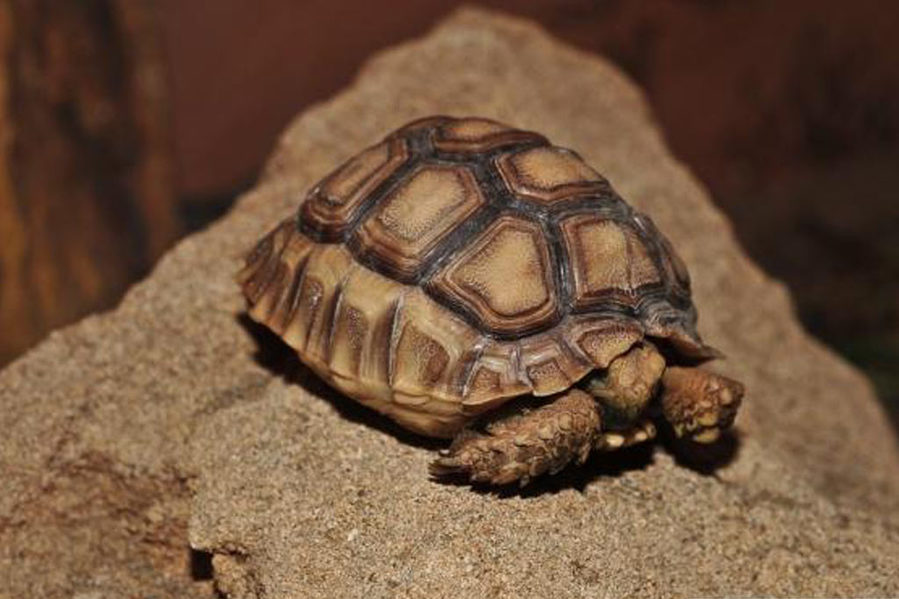
Naval Museum of Oia
Oia, Santorini
The naval history of the island is exhibited in a unique way at the Naval Museum in Oia. The leading figure behind the foundation of a venue that would host this aspect of Santorini’s history was captain Anthony Dakoronias who collected all the interesting material. Today, the museum is housed in a superbly maintained 19th century traditional captain house, donated by the born and raised in Oia Mrs Dina Manolessou-Birbili. Among its exhibits there are figureheads, anchors and various small items of daily use in the sailing vessels of the past. The remarkable collection also features carved nautical chests, sextants, models and watercolour paintings of old and new ships, tools and ship layouts from Santorinian arsenals, uniforms and tools of local shipbuilders. The museum also exhibits rare manuscripts, books, maps, charters, marriage contracts, wills of seafarers and many photos.
Working hours
Monday, Wednesday-Sunday: 10.00-14.00, 17.00-20.00
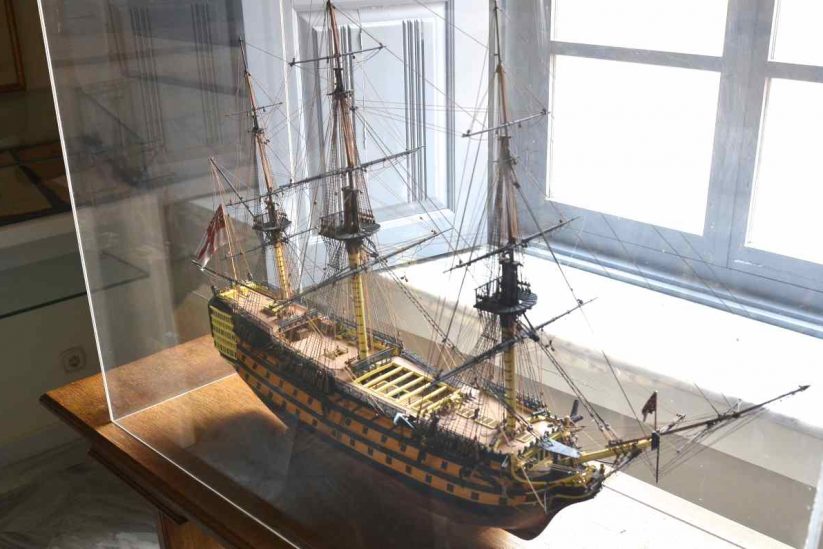
OTE Telecommunications Museum
25 Proteos Street, Nea Kifissia
Man’s telecommunications inventions in his effort to overcome the barriers of space and time, from antiquity to today, compose the collection of OTE Group Telecommunications Museum. The Museum opened its doors to the public in 1990 and ranks in the technology museums. It is a corporate museum, one of a kind in Greece, which responsibly manages its corporate heritage, through its operation. It preserves and exhibits significant collections, closely linked to the history of Greek telecommunications and OTE, as well as to the history of Greece and the evolution of society. It is housed in a building in Nea Kifissia at 25, Proteos Street and features rooms for permanent exhibitions, screenings and lecture hall, library and laboratory. With 27 years of presence, it is also a member of the international organizations ICOM, CECA and CIMUSET.
Working hours
Monday-Friday: 09.00-16.00, and one weekend every month: 09.00-16.00 (upon request)

The Museum of Illusion
Ermou 119 (entrance from Astiggos 12) 10555 Monastiraki
If a picture is worth a thousand words, be sure that an illusion hides more than a million
Enter the fascinating world of illusion which will trick your confidence in senses, but amaze you by doing it; the world that will confuse you completely, but also educate you… Visit us and you will be thrilled because nothing is what it seems, especially not HERE!
Are you ready for an even bigger, better, more fascinating adventure? Visit the Museum of Illusion in Athens; we offer you an intriguing visual, sensory and educational experience with a handful of new, unexplored illusions.
Athens, the main place of illusions!
The Museum of Illusion in Athens brings you a space suitable both for social and entertaining tours into the world of illusions which has delighted all generations. It’s a perfect place for new experiences and fun with friends and family. Not only is it a place for children who adore coming, but also a place for parents, couples, grandmothers and grandfathers.
See what else we offer, you won’t believe your eyes!
Be brave enough to jump in an illusion created by the Vortex Tunnel that will drive you crazy and make you believe you’re heavily struggling just to make a step forward through a rotating cylinder – on a surface so stable and flat! Defor

Thessaloniki Cinema Museum
Pier A, Warehouse A, Port
The Cinema Museum was founded in 1997 when Thessaloniki was the Cultural Capital of Europe. It is housed in the industrial design listed building in Warehouse A, on Pier A in Thessaloniki port. Here you will have the opportunity to explore the history and evolution of early 20th century Greek cinema and the experiments by the vanguard Manakia brothers up to the so-called “spring of the new Greek cinema” at the end of the 20th century. Among the interesting exhibits are the fine collections of cinema billboards of HELLAFFI and Constantine Arvanitidis, the collection of Nicholas and Catherine Bililis which includes film cameras and projectors, developers, reels and photos from Greek movies and the Papadopoulos collection with movies, newsreels, cartoons, trailers and documentaries from America and various countries in Europe, including Greece.
Working hours
Monday-Wednesday: 09.00-15.00, Thursday-Friday: 09.00-19.00


Thessaloniki Olympic Museum
Agiou Dimitriou Street & 3rd Septemvriou Street

The Thessaloniki Sports Museum was founded in 1998 and 10 years later, in January 2008, the International Olympic Committee recognized it as the first Olympic Museum in the country. It is housed in a private building at the junction of Agiou Dimitriou and 3rd Septeptemvriou streets, a hub of sporting, educational and cultural significance. Its construction boasts multi-functional versatility, thanks to the presence of a fully equipped amphitheater, two multipurpose halls, a cafe and a gift shop. Its objective is the preservation, enhancement, information sharing and involvement of the public in matters of sporting heritage. This is achieved through its significant exhibits of collectibles of the Olympic Games, such as uniforms, equipment, Olympic medals, memorabilia and items from the Olympic Games. In this context it continuously organizes educational programs and parallel events
Working hours
Monday-Friday: 09.00-19.00, Saturday: 10.00-16.00, Sunday: 10.00-14:00
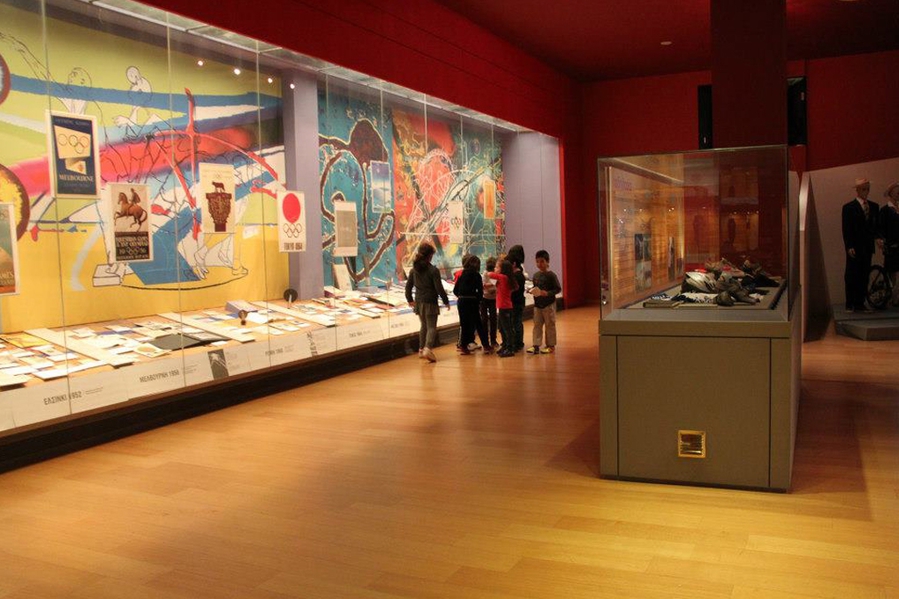
Vorres Museum
1, Parodos Diadochou Konstantinou, Paiania
The cultural foundation, Vorres Museum in Paianias, on the foothills of Mount Hymettus, was created in 1983 with the primary purpose of showcasing the emergence of Greek art and culture, through a fusion of contemporary art and popular culture. The museum occupies an area of 18 acres and consists of two rooms: the Museum of Contemporary Greek Art and the Folk Museum which displays works covering almost 2,500 years of Greek history. At first you’ll notice a multitude of sculptures, structures and paintings from the second half of the 20th century, while in the second you’ll come across antiquities, ceramics, folk relics and objects used daily by people from several centuries ago.
Working hours
Saturday-Sunday: 10.00-14.00 Daily: on request

War Museum
2, Rizari Street, Athens
The War Museum is located in the centre of Athens. Through its rare ancient and modern archives, its unique collections and its priceless artefacts, The War Museum narrates Greek war history in a prominent and profound manner. Designed by a group of distinguished architects and engineers, it was inaugurated on July 18 1975 with the view of honouring those who fought for Greece’s freedom. The exhibition areas are spread over 4 levels and present images of Greek history from the Neolithic era to the present. It also has three permanent collections: the Saroglos collection, with striking weapons from the Greek Revolution, a collection of rare maps and prints, the artillery of the Hellenic Navy and the outdoor collection of aircrafts from the Hellenic Air Force.
Working hours
Tuesday-Saturday: 09.00-19.00, Sunday, National Holidays & Armed Forces Day: 09.00-17.00 (summer), Tuesday- Saturday: 09.00-17.00, Sunday, National Holidays & Armed Forces Day: 09.00-15.00 (winter)


